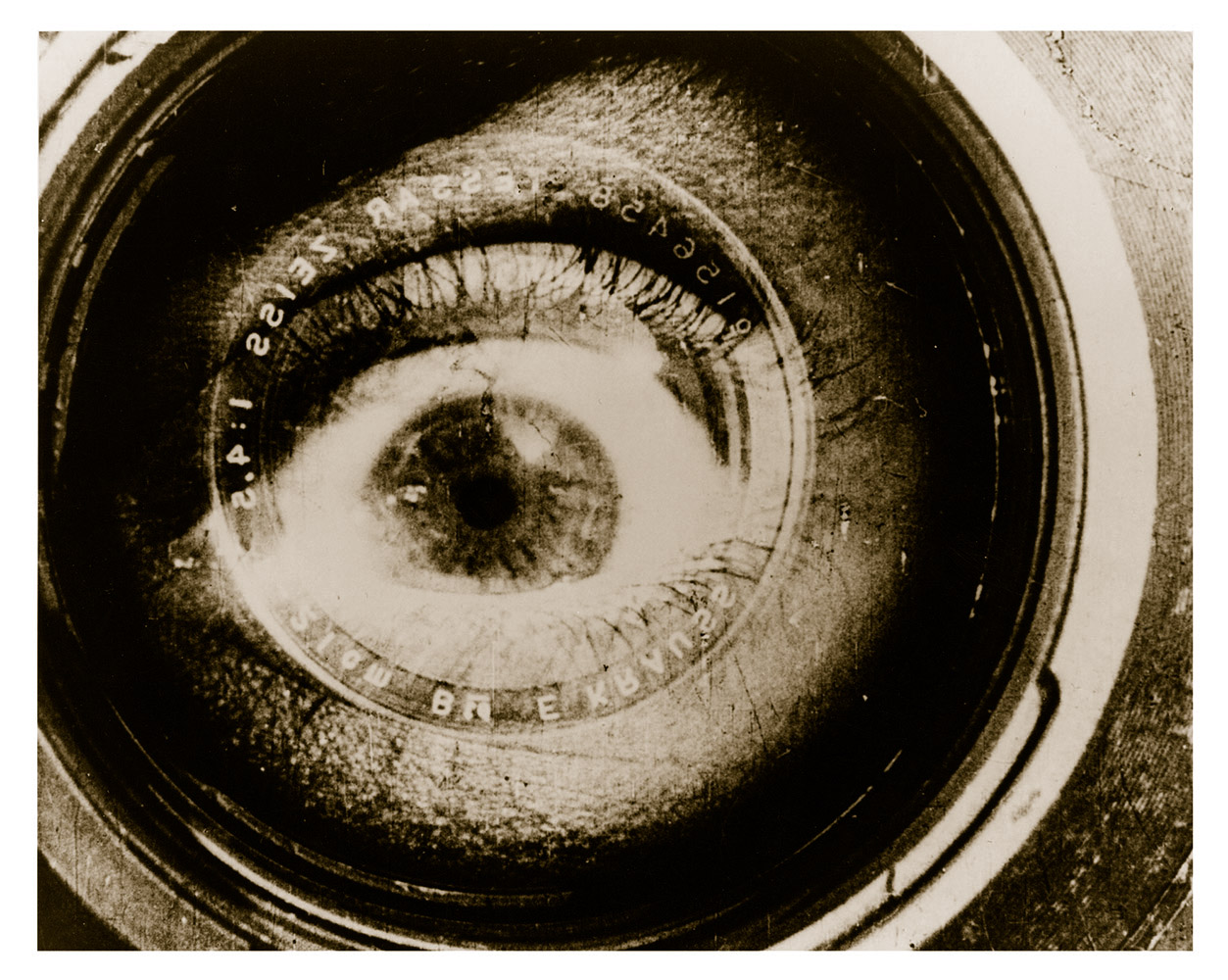WE: Variant of a Manifesto
We call ourselves kinoks – as opposed to ‘cinematographers’, a herd of junkmen doing rather well peddling their rags.
We see no connection between true kinchestvo and the cunning and calculation of the profiteers.
We consider the psychological Russo-German film-drama – weighed down with apparitions and childhood memories – an absurdity.
To the American adventure film with its showy dynamism and to the dramatizations of the American Pinkertons the kinoks say thanks for the rapid shot changes and the close-ups. Good … but disorderly, not based on a precise study of movement. A cut above the psychological drama, but still lacking in foundation. A cliché. A copy of a copy.

WE proclaim the old films, based on the romance, theatrical films and the like, to be leprous.
– Keep away from them!
– Keep your eyes off them!
– They’re mortally dangerous!
– Contagious!
WE affirm the future of cinema art by denying its present.
‘Cinematography’ must die so that the art of the cinema may live. WE call for its death to be hastened.
МЫ открытым лицом к осознанию машинного ритма, восторга механического труда, восприятию красоты химических процессов, поем землетрясения, слагаем кинопоэмы пламени и электростанциям, восторгаемся движениями комет и метеоров и ослепляющими звезды жестами прожекторов.
WE protest against that mixing of the arts which many call synthesis. The mixture of bad colours, even those ideally selected from the spectrum, produces not white, but mud.
Synthesis should come at the summit of each art’s achievement and not before.
WE are cleansing kinochestvo of foreign matter – of music, literature and theatre; we seek our own rhythm, one lifted from nowhere else, and we find it in the movements of things.
WE invite you:
– to flee –
the sweet embraces of the romance,
the poison of the psychological novel,
the clutches of the theatre of adultery;
to turn your back on music,
– to flee –
out into the open, into four dimensions (three + time), in search of our own material, our metre and rhythm.
The ‘psychological’ prevents man from being as precise as a stopwatch; it interferes with his desire for kinship with the machine.

In an art of movement we have no reason to devote our particular attention to contemporary man.
The machine makes us ashamed of man’s inability to control himself, but what are we to do if electricity’s unerring ways are more exciting to us than the disorderly haste of active men and the corrupting inertia of passive ones?
Saws dancing at a sawmill convey to us a joy more intimate and intelligible than that on human dance floors.
For his inability to control his movements, WE temporarily exclude man as a subject for film.
Our path leads through the poetry of machines, from the bungling citizen to the perfect electric man.
In revealing the machine’s soul, in causing the worker to love his workbench, the peasant his tractor, the engineer his engine –
we introduce creative joy into all mechanical labour,
we bring people into closer kinship with machines,
we foster new people.
The new man, free of unwieldiness and clumsiness, will have the light, precise movements of machines and he will be the gratifying subject of our films.
Openly recognizing the rhythm of machines, the delight of mechanical labour, the perception of the beauty of chemical processes, WE sing of earthquakes, we compose film epics of electric power plants and flame, we delight in the movements of comets and meteors and the gestures of searchlights that dazzle the stars.
Cinema is, as well, the art of inventing movements of things in space in response to the demands of science; it embodies the inventor’s dream – be he scholar, artist, engineer, or carpenter; it is the realization by kinchestvo of that which cannot be realized in life.
Drawings in motion. Blueprints in motion. Plans for the future. The theory of relativity on the screen.
WE greet the ordered fantasy of movement.
Our eyes spinning, like propellers, take off into the future on the wings of hypothesis. WE believe that the time is at hand when we shall be able to hurl into space the hurricanes of movement, reined in by our tactical lassoes.
Hurrah for dynamic geometry, the race of points, lines, planes, volumes.
Hurrah for the poetry of machines, propelled and driving; the poetry of levers, wheels and wings of steel; the iron cry of movements; the blinding grimaces of red-hot streams.
Dziga Vertov

